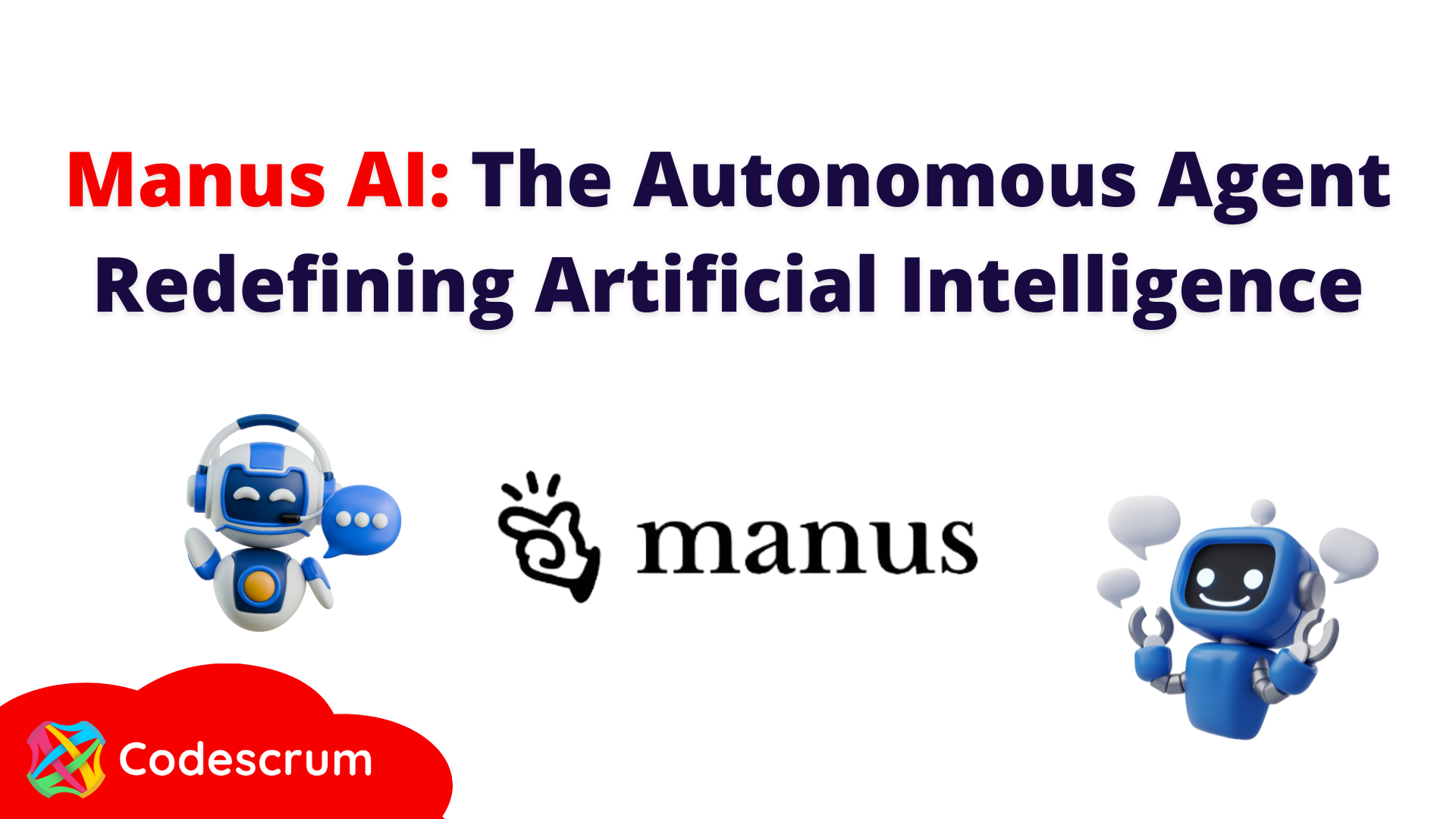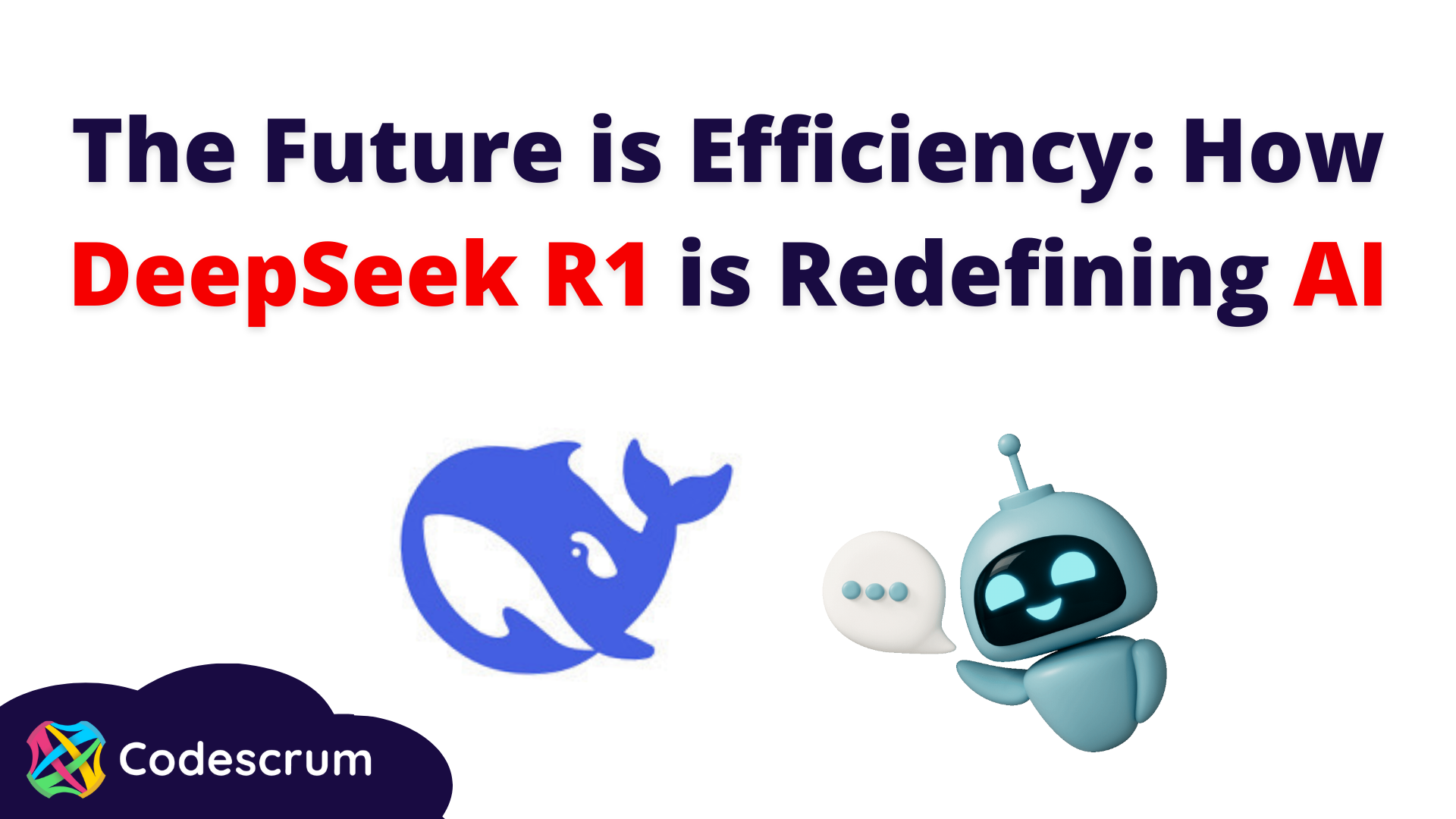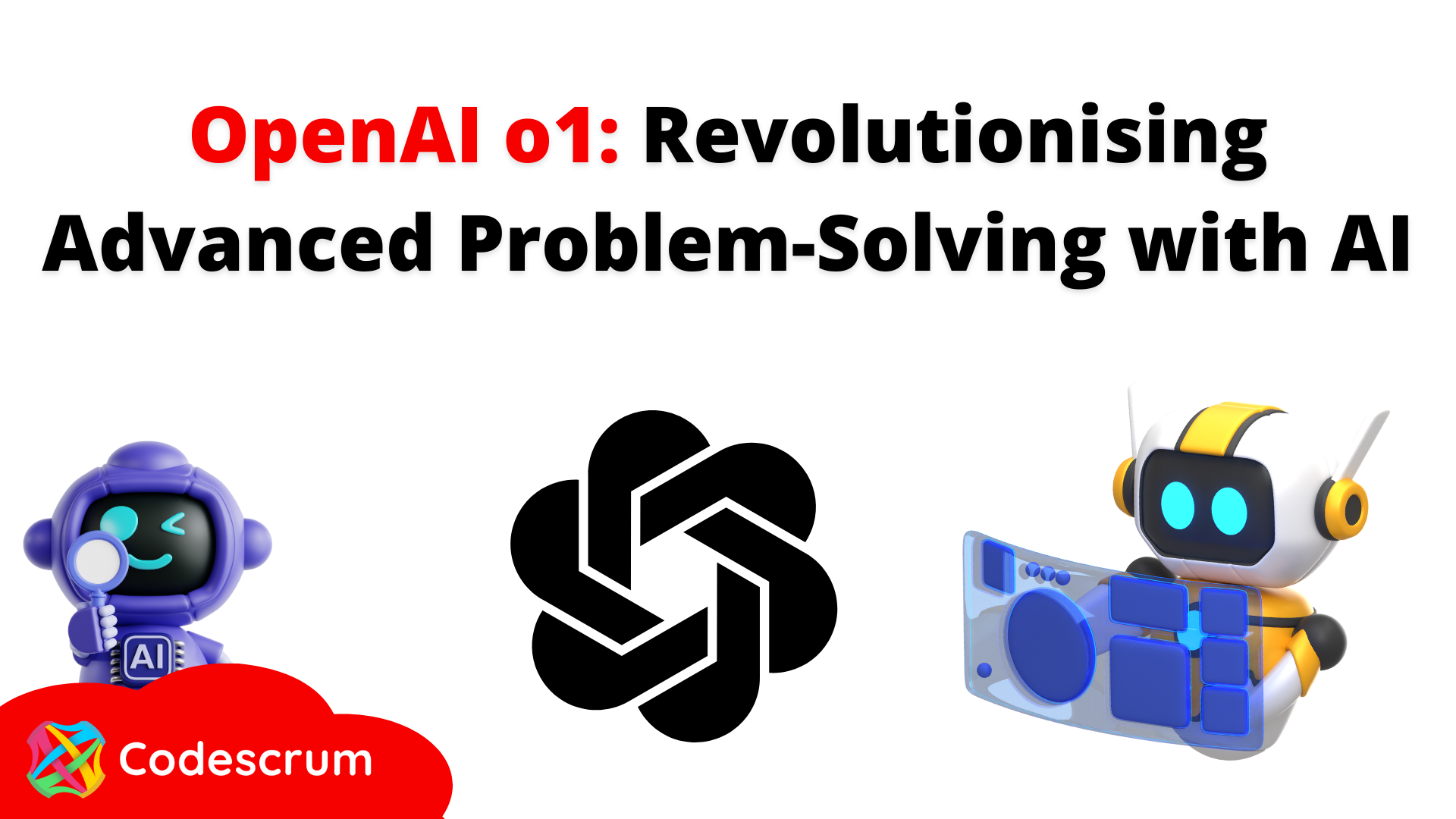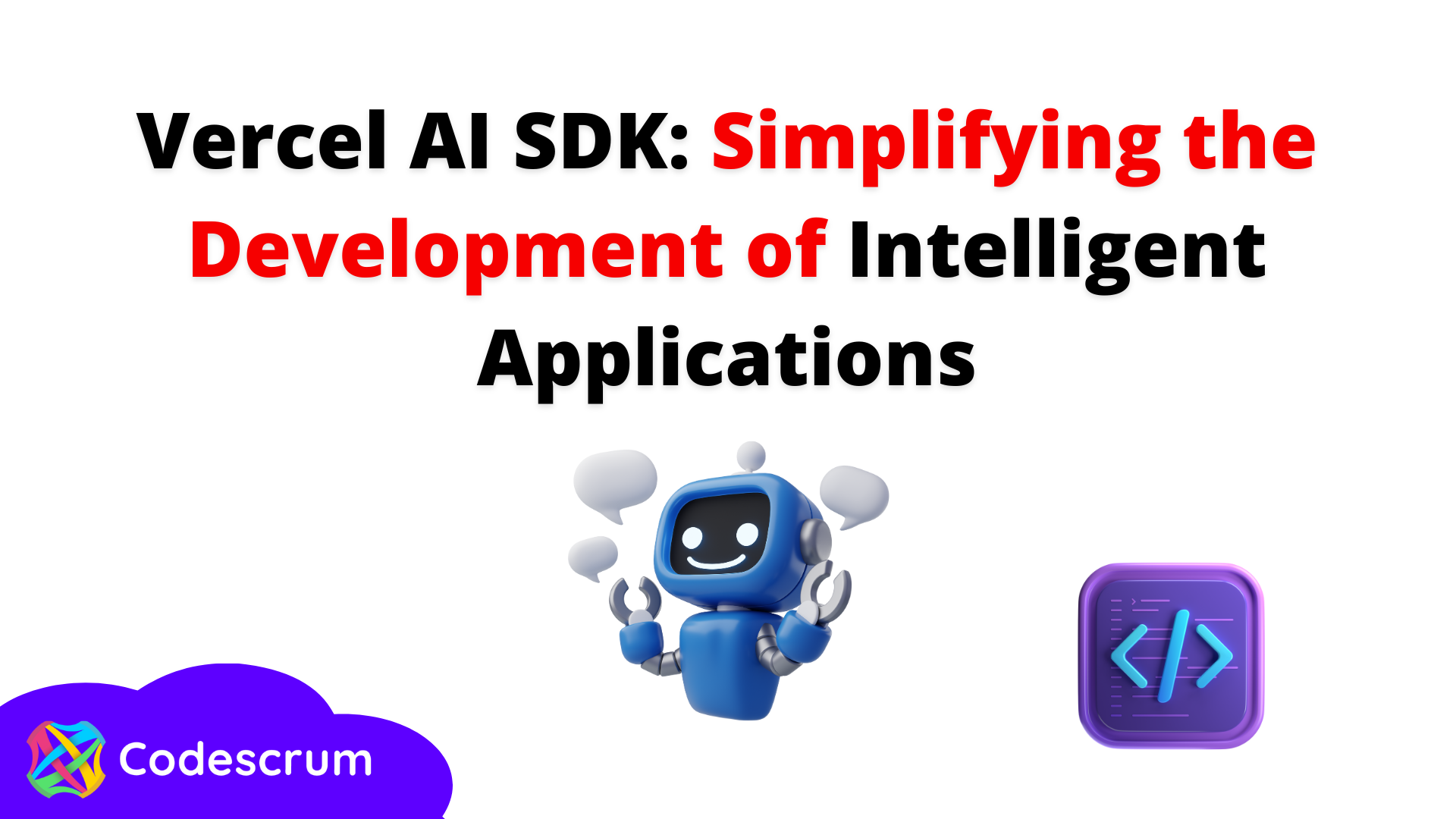Keep updated with
OUR BLOG
Welcome, here you are able to learn and enjoy our informative blog that we have created for you

Innovation is the key differentiator in the rapidly evolving landscape of artificial intelligence (AI). While tech giants like OpenAI, Google, and Anthropic often dominate the headlines, a Chinese startup has quietly emerged, poised to reshape the global AI arena: Manus AI, developed by Butterfly Effect. Touted by many as "the world's first truly autonomous AI agent," Manus represents a significant leap forward in the quest for artificial general intelligence (AGI). But what sets Manus apart from its competitors, and how does it challenge established leaders? In this article, we delve into Manus's capabilities, architecture, and potential impact on the future of AI worldwide. What Is Manus AI? Derived from the Latin word for "hand," Manus is an AI generalist agent capable of transforming abstract thoughts into concrete actions. Unlike conventional chatbots or AI assistants that require continuous human prompting and supervision, Manus operates independently—initiating tasks, navigating the web, gathering information, and managing complex workflows with little to no human input. A defining characteristic of Manus is its ability to adapt its response strategies in real time. This is not merely a predictive model that outputs pre-programmed answers; instead, it is an intelligent system equipped with strategic autonomy, able to dynamically adjust its approach based on live information collected from the digital environment. How Manus Works: Multi-Agent Architecture and Asynchronous Operation Manus' standout feature lies in its multi-agent architecture. Rather than relying on a single monolithic neural network, as seen in most mainstream AI models, Manus intelligently breaks tasks into smaller components and assigns them to specialised sub-agents. Each sub-agent is fine-tuned to execute specific parts of the workflow, ensuring enhanced efficiency and precision. This occurs seamlessly within a unified system, relieving users of the need to integrate multiple AI tools manually. Equally important is its cloud-based asynchronous operation. Unlike typical AI assistants that require continuous engagement and prompt-response cycles, Manus functions quietly in the background. It autonomously carries out tasks and alerts users only when results are ready. This workflow is designed to streamline productivity, allowing users to delegate responsibilities with confidence that Manus will independently handle the process from start to finish without the need for intervention. Real-World Use Cases: Manus in Action Manus' official demonstrations illustrate its wide-ranging applications and how it surpasses existing agents. Some of the standout examples include: Advanced Data Analysis: Manus can perform in-depth evaluations of stock performance, such as providing visual dashboards for companies like Tesla. It also conducts market research and comparative analyses, such as assessing insurance products. Personalised Education: It can create tailored presentations and educational content, adjusting the material based on the learner's profile and objectives. Travel Planning: Manus analyses weather, safety data, rental prices, and user preferences to craft detailed, fully personalised travel itineraries and guides. E-commerce Optimisation: For online retailers, Manus processes sales data from platforms like Amazon and proposes strategies to enhance commercial performance. These real-world examples illustrate how Manus is not merely reactive—it is proactive. It conducts research, organises information, and delivers ready-to-implement solutions with minimal human guidance, ensuring maximum efficiency. Manus vs OpenAI and DeepSeek: The General AI Race The most striking claim made by Manus' developers is that it outperforms OpenAI's Deep Research model in the GAIA Benchmark—a widely respected metric for evaluating generalist AI agents. Surpassing such a powerful model signals Manus's capacity to disrupt the status quo. Historically, models like Deep Research and OpenAI’s GPT-4 have been considered the gold standard in advanced reasoning and autonomy. Yet, Manus’s greater efficiency, lower operational costs, and modular architecture make it a desirable alternative, particularly in industries that demand complex, customised workflows. Moreover, Chinese models such as DeepSeek-R1 have already proven their capability to deliver advanced reasoning at a fraction of the cost compared to their Western counterparts. Manus's emergence further accelerates this shift towards more affordable, robust, and scalable AI solutions—escalating the competition in the global AI landscape significantly. Geopolitical Context and Manus' Controversies Unsurprisingly, Manus's rapid ascent has not been free of scrutiny. Various experts and analysts from the United States have voiced scepticism, questioning the opacity surrounding the project’s funding, access restrictions, and the underlying technology. Some critics have gone so far as to allege that the Butterfly Effect may have leveraged knowledge derived from OpenAI's models to train its agent. This unfolds against the intensifying technological rivalry between China and the United States. Both nations have enacted stringent restrictions on exchanging critical technologies such as semiconductors and AI software. Manus, representing a significant breakthrough in autonomous AI capabilities, has only heightened this ongoing competition. Manus AI: Pioneering the Next Frontier in Autonomous Intelligence Setting aside geopolitical tensions, Manus epitomises a broader trend in artificial intelligence development: the move towards agents capable not only of interpreting human input but also of autonomously executing actions. The vision of an internet where machines generate, distribute, and consume content—independent of human intervention—is fast becoming a reality. The practical implications are vast for businesses and organisations. Manus' capacity to autonomously manage tasks allows companies to offload routine, time-consuming processes, freeing up human resources for strategic decision-making. Whether streamlining administrative duties, performing data-driven market analyses, or even managing supply chains, Manus' modular, autonomous framework offers unprecedented scalability and flexibility. Manus AI is not merely another AI assistant; it is a fully autonomous agent embodying the future trajectory of artificial intelligence. Its multi-agent architecture, asynchronous operation, and ability to adapt in real time position it as a formidable contender in the quest for AGI. While concerns surrounding transparency and geopolitical impact persist, Manus represents a pivotal advancement in AI development. As the industry continues to evolve rapidly, Manus serves as a clear indicator that the era of autonomous, proactive AI agents is no longer a distant vision—it is already here, actively reshaping how we interact with technology at every level of society and business.

The emergence of DeepSeek R1 has shaken the strategies of tech giants, sent shockwaves through financial markets, and ignited a new level of geopolitical competition between the United States and China. But beyond these immediate impacts, DeepSeek R1 represents a fundamental shift in how artificial intelligence (AI) is developed and deployed. Rather than following the traditional "bigger is better" approach, where massive models with trillions of parameters dominate, DeepSeek R1 champions a new paradigm: efficiency. A Break from Tradition: The Efficiency Revolution For years, the prevailing AI philosophy was simple: larger models, more GPUs, and higher energy consumption meant better performance. DeepSeek R1 challenges this notion. Trained at a fraction of the cost of its Western counterparts, just $5.6 million compared to the billions invested by OpenAI and Google, DeepSeek proves that scalability depends not solely on size but algorithmic intelligence. The introduction of R1 raises critical questions about the future of Large Language Models (LLMs). Are these expansive models already on the verge of obsolescence? With rapid advancements in efficiency-driven AI, businesses and researchers must reconsider their dependence on resource-intensive models that leaner, more cost-effective alternatives may soon outpace. The Geopolitical Battle Over AI DeepSeek R1’s arrival is more than a technological breakthrough; it has geopolitical implications. The AI race is now a battleground for global influence, drawing comparisons to Huawei’s dominance in 5G technology. Just as the U.S. took extreme measures to curb Huawei’s expansion, it is now attempting to regulate AI development by restricting advanced GPUs and open-source AI. However, DeepSeek R1 demonstrates that such restrictions cannot slow China’s AI progress. By optimising efficiency and reducing dependency on high-end chips, DeepSeek has circumvented U.S. sanctions and emerged as a formidable competitor. This has raised concerns in the West about the control of AI-generated information. If AI models developed in China become globally dominant, the risk of information control and censorship increases, influencing public discourse on key issues. Open-Source AI vs. Proprietary Models, A Coexisting Future One of the most striking aspects of DeepSeek R1 is its open-source nature. Historically, open-source software has challenged proprietary solutions by dramatically reducing costs and increasing accessibility. We have seen this pattern with Linux in enterprise computing, Android in mobile operating systems, and MySQL in database management. AI is now following the same trajectory. Yet, major Western AI labs, OpenAI, Google, and Anthropic, continue to lead in multimodal AI, safety protocols, and model security. DeepSeek R1 may be efficient, but concerns over its robustness and potential vulnerabilities remain. Microsoft’s immediate integration of DeepSeek R1 into Azure suggests a growing appetite for open models, particularly for businesses looking to balance cost and flexibility. However, proprietary models will continue to play a crucial role in ensuring security and regulatory compliance, leading to a hybrid AI ecosystem where both approaches coexist. The Economic Implications of AI Cost Reduction One of the most debated aspects of DeepSeek R1 is its development cost. While $5.6 million is a fraction of what leading AI firms spend, the figure likely only accounts for training, excluding infrastructure, engineering, and deployment costs. Nevertheless, the real game-changer is inference cost, the cost associated with using AI models in real-world applications. Lower inference costs mean broader adoption, much like declining semiconductor prices fueled the mass adoption of consumer electronics. This shift will have profound economic consequences. As AI becomes more affordable, startups and mid-sized enterprises can integrate advanced AI without requiring massive infrastructure investments. This democratisation of AI will disrupt industries traditionally dominated by a handful of tech giants. The Role of Reinforcement Learning and AI Agents DeepSeek R1 is not just another LLM but a shift toward reasoning-based AI. Historically, LLMs excelled at pattern recognition but struggled with logical reasoning and decision-making. DeepSeek R1 integrates reinforcement learning techniques, allowing it to solve complex problems methodically rather than simply predicting the next word in a sequence. This evolution paves the way for autonomous AI agents capable of adapting to dynamic workflows. From customer service to administrative tasks and data analysis, AI is moving beyond predefined scripts to real-time decision-making. The business world must prepare for a future where AI-driven automation extends beyond simple chatbot interactions into comprehensive, intelligent task execution. The Chip Shortage Driving Algorithmic Innovation The U.S. imposed semiconductor export restrictions to limit China’s AI capabilities. However, these constraints have unintended consequences: they have pushed Chinese researchers to prioritise efficiency over brute computational power. As AI models become more optimised, the demand for high-end chips could decrease, fundamentally altering the AI hardware landscape. While Western AI firms continue to invest heavily in GPU-driven research, China’s focus on efficiency could prove to be a more sustainable long-term strategy. The balance between computational power and algorithmic efficiency will likely define the next phase of AI innovation. What Comes Next? A Shifting AI Landscape DeepSeek R1 is not the final chapter in AI development; it is the beginning of a broader shift. Here are three key takeaways for businesses, regulators, and AI researchers: Efficiency is the new frontier: The AI race will no longer be won by sheer computing power. Algorithmic advancements will drive the next wave of breakthroughs. Regulation must balance security with innovation: Overregulating AI could slow down Western progress while allowing China to take the lead in global adoption. Application matters more than model size: AI accessibility is increasing, but success will depend on how effectively companies integrate AI into their operations. Conclusion: AI’s Future Lies in Strategic Deployment The rise of DeepSeek R1 signals a transformation in AI development. Rather than investing solely in more extensive and expensive models, the industry must focus on efficiency, usability, and strategic deployment. Businesses that adapt to this shift will gain a competitive edge, while regulators must navigate the complex landscape of security, innovation, and geopolitical competition. AI is no longer just about who builds the biggest model, it’s about who uses it most effectively. The future belongs to those who can harness AI’s power efficiently and strategically. DeepSeek R1 is just the beginning.

Artificial intelligence (AI) continues to advance at an incredible pace, revolutionising various industries and transforming the way we work and create. Today, we are witnessing two innovations that are reshaping the AI landscape: Claude 3.5 Sonnet and Claude 3.5 Haiku. Developed by Anthropic, these models redefine efficiency in coding and problem-solving tasks while introducing groundbreaking features, such as enabling AI to interact with computers in a remarkably human-like way. In this article, we will delve into the exceptional capabilities of these models, their key advancements, comparisons with competitors, and how they can dramatically transform workflows to boost productivity in high-tech environments. Claude 3.5 Sonnet: Innovation in Coding and Reasoning The updated version of Claude 3.5 Sonnet is not just an incremental improvement but a qualitative leap in programming and solving complex problems. In specific tasks such as coding, the model demonstrates exceptional performance, achieving a remarkable 93.7% accuracy in coding evaluations like HumanEval. This figure significantly surpasses most models on the market, including renowned competitors like the GPT-4o mini. The improvement in tool use and coding benchmarks is equally impressive. In evaluations like SWE-bench Verified, Claude 3.5 Sonnet improved from 33.4% in its previous version to 49.0%, making it an ideal tool for developers managing complex processes and performing advanced reasoning tasks. But it is not just about the numbers. Major tech companies like GitLab have integrated Claude 3.5 Sonnet into their workflows, achieving up to 10% improvements in DevSecOps tasks without sacrificing processing speed. This demonstrates the model’s incredible ability to handle multi-step tasks and seamlessly adapt to demanding environments. Claude 3.5 Haiku: Speed and Performance at an Affordable Cost If speed and affordability are your top priorities, Claude 3.5 Haiku is the perfect choice. Designed to deliver an exceptional balance between speed and performance, this model excels in practical tasks requiring quick and accurate responses. Claude 3.5 Haiku performs impressively in coding tasks, scoring 88.1% in evaluations like HumanEval. Although more compact than Claude 3.5 Sonnet, it excels in specific tasks such as handling large datasets and personalising user experiences. This makes it an ideal choice for businesses looking to maximise efficiency without incurring excessive costs. Companies like Asana and Canva have already started using Claude 3.5 Haiku to automate repetitive processes, optimise workflows, and generate personalised experiences based on complex data. Early implementations show that even in demanding business environments, Haiku maintains high accuracy and speed without compromising quality. Claude Learns to Use Computers: A Game-Changing Revolution One of the most exciting advancements introduced by Claude 3.5 Sonnet is its ability to "use computers" like a human. This means the model can move a cursor, click buttons, type text, and interact with graphical interfaces. Although this feature is in a beta experimental phase, it is already transforming how businesses tackle complex tasks. For instance, Replit uses this ability to evaluate applications in real-time, while companies like DoorDash and Cognition are exploring how Claude can automate processes that previously required dozens—or even hundreds—of manual steps. This capability allows the model to perform tasks like filling out forms, navigating web pages, managing spreadsheets, and conducting open-ended research—all through simple instructions translated into computer actions. While this feature still has room for improvement, its potential is undeniable. Comparisons with Other Models Claude 3.5 Sonnet and Haiku do not operate in a vacuum—they are designed to compete with other big names in the AI industry. When compared to models like GPT-4o and Gemini 1.5, Claude 3.5 Sonnet shows superior performance in key tasks. In graduate-level reasoning evaluations, Claude 3.5 Sonnet achieves an impressive 65.0%, outperforming GPT-4o and smaller models like GPT-4o mini. In coding tests, its 93.7% accuracy stands out significantly above its direct competitors. Meanwhile, Claude 3.5 Haiku offers competitive performance against models in its category, excelling in speed and low latency. This makes it a viable option for tasks where speed is as critical as accuracy. Practical Applications and Use Cases Developers and businesses adopting these models will find countless practical applications. Claude 3.5 Sonnet is ideal for complex software development projects, from planning to implementation, while Claude 3.5 Haiku is perfect for data analysis, content creation, and real-time information management. Additionally, the ability to use computers opens up a new realm of exciting possibilities. Imagine an AI system capable of automating a process in a CRM, conducting online research, or even testing applications under development. This not only saves time but also reduces human error and improves operational efficiency. A Responsible Approach to Scalability With significant advancements come great responsibilities, and Anthropic understands this perfectly. To ensure safe use of these new capabilities, the company has developed classifiers that detect potential misuse, such as spam or disinformation. Additionally, rigorous testing has been conducted in collaboration with AI safety institutes in the United States and the United Kingdom, ensuring these models meet high safety standards. What’s Next for the Future? Claude 3.5 Sonnet and Haiku represent just the beginning of what promises to be a new era in artificial intelligence. The capabilities they are introducing—from coding advancements to computer usage—are paving the way for more versatile, autonomous, and efficient systems. As more companies adopt these technologies and provide feedback, we can expect rapid improvements and the emergence of new applications we have not even imagined yet. Conclusion Whether you are a developer, entrepreneur, or simply a tech enthusiast, Claude 3.5 Sonnet and Haiku offer innovative tools that can transform the way you work. From more precise coding to the ability to automate complex tasks, these models are redefining what is possible with artificial intelligence.

The cryptocurrency market is evolving unprecedentedly, and traders increasingly turn to AI-powered trading bots to maximise their profits and maintain a competitive edge. Building your own AI crypto trading bot can seem daunting, but with the right strategy, tools, and approach, it becomes achievable for traders at all levels. This step-by-step guide will walk you through creating an AI crypto trading bot tailored for maximum profitability, ensuring you stay ahead in the dynamic world of cryptocurrency trading. Why Build an AI Crypto Trading Bot? Before diving into the creation process, it's essential to understand why AI crypto trading bots are gaining so much traction: Speed and Precision: Bots can analyse data and execute trades in milliseconds, capitalising on fleeting opportunities. Emotion-Free Trading: AI operates based on algorithms and data, eliminating human emotions like fear and greed. 24/7 Market Monitoring: Unlike humans, bots can monitor the market continuously, ensuring no profitable trade is missed. Scalability: AI bots can handle multiple trading accounts and portfolios simultaneously, providing significant scalability for traders. Customisable Strategies: With AI, you can tailor strategies to match your trading goals, risk tolerance, and market conditions. Now that you know the benefits, let's break down the steps to build your AI-powered crypto trading bot. Step 1: Choose the Right Programming Language The foundation of any AI bot is its programming language. Python is the most popular choice for building AI trading bots due to its simplicity, versatility, and extensive library support. Key Python libraries for AI and data analysis include: Pandas and NumPy: For data manipulation and analysis. TensorFlow and PyTorch : For machine learning model development. Scikit-learn: For implementing various AI algorithms. Matplotlib: For visualising trading data. While Python is ideal for most developers, other languages like JavaScript and C++ can also be used for specific applications requiring speed or browser-based functionality. Step 2: Integrate with a Crypto Exchange AP I Your bot must connect to a cryptocurrency exchange to access real-time data and execute trades. Most exchanges like Binance, Kraken, and Coinbase provide APIs (Application Programming Interfaces) for developers. Sign Up: Choose a reliable exchange and create an account. API Keys: Obtain secure API keys (public and private) from the exchange to allow your bot to interact with the trading platform. Understand API Limits: Familiarize yourself with rate limits, data access permissions, and security protocols to avoid disruptions. At this stage, you’ll program your bot to fetch real-time market data (e.g., price, volume, and order book) and send trade orders securely to the exchange. Step 3: Collect and Prepare Market Data AI-powered bots rely heavily on historical and real-time market data to make informed trading decisions. The types of data you’ll need include: Historical Price Data: Open, high, low, and close (OHLC) data for analysing trends. Order Book Data: To assess liquidity and market depth. News Sentiment: Use Natural Language Processing (NLP) to analyse news articles, social media posts, and market sentiment. Ensure your bot has a robust data pipeline to efficiently collect, clean, and preprocess data. Libraries like Pandas can help with data organisation and preparation. Step 4: Develop the AI Model The AI model is the brain behind your trading bot. This step involves building machine learning algorithms to predict market movements and generate actionable trading signals. Popular AI Techniques for Crypto Trading Bots: Time-Series Analysis: Use models like LSTMs (Long Short-Term Memory) to predict future prices based on historical data. Sentiment Analysis: NLP tools like BERT can extract sentiment from social media and news, helping bots gauge market sentiment. Reinforcement Learning: This allows bots to learn from past trades and adapt strategies based on success or failure. For beginners, start with simpler models like logistic regression or decision trees, then gradually implement deep learning for more complex predictions. Step 5: Define a Real-Time Decision-Making Framework Your bot needs to analyse market data in real time and make decisions instantly. The real-time decision-making framework should include the following: Signal Generation : Identify entry and exit points for trades based on AI predictions. Order Execution: Use the exchange API to place buy and sell orders. Risk Management: Set stop-loss and take-profit levels to minimise potential losses. To achieve real-time responsiveness, use WebSocket connections to stream live market data directly into your bot, ensuring it always operates with up-to-date information. Step 6: Test Your AI Trading Bot Before deploying your bot, it’s crucial to test its performance using historical and live market data. Backtesting: Simulate trades using historical data to evaluate the bot's performance. Tools like Backtrader or Zipline can help with this. Paper Trading: Test the bot in live market conditions without risking actual capital. Performance Metrics: Evaluate key metrics like: Win rate Average return per trade Drawdown Sharpe ratio Refine your AI model and trading strategies based on the test results to ensure optimal performance. Step 7: Deploy the Bot for Live Trading Once testing is complete and the bot is performing well, deploy it for live trading: Cloud Deployment: Use cloud platforms like AWS, Google Cloud, or Azure for seamless and scalable deployment. Security Measures: Implement strong encryption, API key protection, and two-factor authentication to safeguard against cyber threats. Monitoring: Set up real-time dashboards using tools like Grafana to monitor the bot's performance and market behaviour. Continue to track and refine your bot as it trades in live market conditions to optimize profitability. Key Considerations Before Deploying an AI Crypto Trading Bot Market Volatility: Cryptocurrencies are highly volatile. Ensure your bot adapts to sudden price swings and has effective stop-loss mechanisms. Regulatory Compliance: Stay updated on crypto trading regulations in your jurisdiction to avoid legal issues. Risk Management: Implement robust risk parameters to protect your capital from market downturns. Security: Regularly update your bot to address vulnerabilities and prevent unauthorized access. Conclusion: Start Building Your AI Crypto Trading Bot Today Building an AI-powered crypto trading bot is no longer reserved for expert developers. With the right tools, programming knowledge, and step-by-step guidance, anyone can create a bot that automates trades, maximizes profitability, and gives a competitive edge in the dynamic crypto market. While the process requires dedication and continuous refinement, the rewards of having a bot that works tirelessly on your behalf are well worth the effort. Whether you’re a retail trader or an institutional investor, now is the perfect time to leverage AI technology and take your trading strategy to the next level.

Artificial intelligence constantly evolves, with models pushing the boundaries of what machines can achieve. OpenAI o1 is the latest leap forward, a model designed to excel in complex reasoning tasks. With its advanced capabilities, OpenAI o1 represents a significant improvement over its predecessors, offering a solution tailored to demanding tasks such as mathematical reasoning, coding, and multi-step problem-solving. This article will delve into what sets OpenAI o1 apart, its critical applications, accessibility, and the features anticipated in future updates. What is OpenAI o1? OpenAI o1 is a state-of-the-art AI model engineered to address challenges that require sophisticated reasoning. Unlike previous generations of AI models, including GPT-4, OpenAI o1 employs chain-of-thought reasoning, which enables it to break down complex problems into manageable steps. This approach enhances the accuracy of its outputs and makes it particularly well-suited for tasks involving logic, analytical thinking, and structured problem-solving. For instance, while traditional models might struggle to follow a mathematical proof or debug intricate code, OpenAI o1 can systematically navigate through these tasks, offering clarity and precision. Key Applications of OpenAI o1 OpenAI o1 is not just another AI model but a tool for tackling some of the most demanding intellectual challenges. Here are some areas where it particularly shines: Mathematics: From solving advanced equations to verifying the accuracy of proofs, OpenAI o1 excels in mathematical reasoning. It can assist students, researchers, and educators solve problems requiring logical deduction and multi-step calculations. Coding and Debugging: Developers can rely on OpenAI o1 for coding assistance, debugging, and even optimising algorithms. Its ability to follow structured processes ensures it can untangle even the most complicated programming issues. Data Analysis: OpenAI o1 simplifies extracting insights from large datasets. It can generate reports, interpret trends, and provide predictions based on comprehensive analyses. Scientific Research: Researchers working on complex problems—whether in physics, biology, or other domains—can leverage OpenAI o1 for tasks such as hypothesis testing, modelling, and simulation. Creative Problem-Solving: Beyond traditional applications, OpenAI o1 can assist with puzzles, strategy development, and even brainstorming innovative solutions to real-world challenges. How to Access OpenAI o1 Accessing OpenAI o1 is straightforward. Users can interact with the model via ChatGPT, while developers can integrate its functionality through OpenAI’s API. The platform ensures seamless usability, allowing casual users and professionals to benefit from its advanced reasoning capabilities. For those with lighter workloads, OpenAI also offers o1-mini, a scaled-down version of the model. While it is less powerful for tasks involving deep reasoning, it is ideal for simpler operations. Pricing Structure for OpenAI o1 The pricing of OpenAI o1 is based on the number of tokens processed, with costs varying between input and output tokens. It’s worth noting that token counts include visible outputs and invisible reasoning steps, contributing to the model's processing efforts. o1-preview: $15.00 per million input tokens and $60.00 per million output tokens. o1-mini : $3.00 per million input tokens and $12.00 per million output tokens. This pricing structure ensures flexibility, allowing users to choose the option that best aligns with their needs and budget. What Makes OpenAI o1 Unique? The standout feature of OpenAI o1 is its chain-of-thought reasoning. This method involves breaking a problem into smaller steps, allowing the model to approach challenges methodically. The result is a significant improvement in accuracy, particularly for tasks requiring multiple reasoning stages. Moreover, OpenAI o1 offers unparalleled versatility. It can pivot between tasks, adapting its approach to suit the specific problem. This adaptability and its superior reasoning capabilities make it a game-changer in AI development. Anticipated Future Updates OpenAI has a strong track record of innovation, and future updates to o1 are expected to enhance its capabilities further. Some of the most anticipated features include: Faster Response Times: Making the model even more efficient for real-time problem-solving. Web Browsing: Allowing o1 to pull in real-time data and incorporate it into its analyses. File Handling: Enabling direct interaction with documents, spreadsheets, and other files for more integrated workflows. These updates aim to solidify OpenAI o1’s position as the go-to model for advanced problem-solving. Ethical Considerations As with any powerful AI tool, ethical considerations play a vital role in its development and deployment. OpenAI is committed to ensuring its models are used responsibly, avoiding misuse and minimising biases. Transparency in pricing and functionality further reinforces OpenAI’s dedication to ethical AI practices. Conclusion OpenAI o1 is more than just an upgrade—it is a transformative tool that redefines what artificial intelligence can achieve. By excelling in complex reasoning and offering unparalleled accuracy, it addresses challenges across mathematics, coding, data analysis, and beyond. With its robust capabilities, flexible pricing, and anticipated future enhancements, OpenAI o1 sets a new benchmark for AI-driven problem-solving. Whether you are a student, a developer, a researcher, or a business professional, OpenAI o1 is a powerful ally for tackling intellectual challenges and achieving breakthrough results.

In recent years, large language models (LLMs) and generative artificial intelligence have transformed technology, powering applications to generate text, create images, answer complex questions, and more. However, integrating these models into applications is not straightforward: the diversity of providers, APIs, and formats can make development a highly complex challenge. The Vercel AI SDK emerges as a powerful solution that unifies and simplifies this process, allowing developers to focus on building applications rather than struggling with integrating multiple platforms and model providers. What is the Vercel AI SDK? The Vercel AI SDK is a TypeScript toolkit designed to facilitate the creation of AI-driven applications in modern development environments such as React, Next.js, Vue, Svelte, and Node.js. Through a unified API, the SDK enables seamless integration of language and content generation models into applications of any scale, helping developers build generative and chat interfaces without confronting the technical complexity of each model provider. With the AI SDK, Vercel allows developers to easily switch providers or use several in parallel, reducing the risk of relying on a single provider and enabling unprecedented flexibility in AI development. Main Components of the Vercel AI SDK The SDK comprises two primary components: AI SDK Core: This unified API handles text generation, structured objects, and tool-calling with LLMs. This approach allows developers to work on their applications without customising the code for each model provider. AI SDK UI : A set of agnostic UI hooks and components that enable the quick creation of chat and generative applications by leveraging the power of LLMs. These hooks are ideal for creating real-time conversational experiences that maintain interactivity and flow. Supported Models and Providers The Vercel AI SDK is compatible with major providers of language and content generation models, including: OpenAI: A pioneer in generative artificial intelligence, offering models like GPT-4 and DALL-E. Azure : With integration for Microsoft’s cloud AI services. Anthropic: Specialised in safe and ethical LLMs. Amazon Bedrock: Amazon’s cloud generative AI service. G oogle Vertex AI and Google Generative AI: Models designed for high-performance enterprise solutions. Additionally, the SDK supports integration with providers and OpenAI-compatible APIs like Groq, Perplexity, and Fireworks, as well as other open-source models created by the community. Key Benefits of the Vercel AI SDK Integrating language models can be challenging due to differences in APIs, authentication, and each provider's capabilities. The Vercel AI SDK simplifies these processes, offering several benefits for developers of all levels: Unified API: The SDK’s API allows developers to work uniformly with different providers. For example, switching from OpenAI to Azure becomes a seamless process without needing to rewrite extensive code. Flexibility and Vendor Lock-In Mitigation: With support for multiple providers, developers can avoid dependency on a single provider, enabling them to select the model that best suits their needs and switch without losing functionality. Streamlined Setup and Simplified Prompts: The SDK’s prompt and message management is designed to be intuitive and reduce friction when setting up complex interactions between user and model. Streaming UI Integration: The SDK's significant advantage is its ability to facilitate streaming user interfaces. This allows LLM-generated responses to stream in real-time, enhancing the user experience in conversational applications. Streaming vs. Blocking UI: Enhancing User Experience The Vercel AI SDK enables developers to implement streaming user interfaces (UIs), which are essential for conversational or chat applications. When generating lengthy responses, a traditional blocking UI may result in users waiting up to 40 seconds to see the entire response. This slows down the experience and can be frustrating in applications that aim for natural and fluid interaction, such as virtual assistants or chatbots. In a streaming UI, content is displayed as the model generates it. This means users see the response in real time, which is ideal for chat applications that aim to simulate human response speed. Here’s an example of the code required to implement streaming UI with the SDK: import { openai } from '@ai-sdk/openai'; import { streamText } from 'ai'; const { textStream } = await streamText({ model: openai('gpt-4-turbo'), prompt: 'Write a poem about embedding models.', }); for await (const textPart of textStream) { console.log(textPart); } This code uses the SDK’s streamText function to generate real-time text with OpenAI’s GPT-4 Turbo model, splitting the response into parts to stream immediately. With just a few lines of code, developers can create an immersive and fast experience ideal for conversation-based applications. Use Cases The Vercel AI SDK has immense potential in various applications, from customer service automation to building personalised virtual assistants. Here are some practical use cases: Virtual Assistants and Chatbots : Thanks to the streaming UI, chatbots can respond in real-time, simulating a smooth and rapid conversation. This is valuable in customer service, healthcare, education, and more. Customised Content Generation: For blogs, media, and e-commerce, the SDK allows developers to automatically create large-scale product descriptions, social media posts, and article summaries. Code and Documentation Assistants: Developers can use the SDK to build assistants that help users find information in technical documentation, improving productivity in development and support projects. Interactive Art and Creativity Applications: The SDK supports the creation of immersive generative art experiences, which are in high demand in the creative industry. It is compatible with generating images, audio, and text. Getting Started with the Vercel AI SDK Integrating with the Vercel AI SDK is straightforward. By installing the SDK with TypeScript, developers can import and use its functions in just a few minutes, including text generation, support for complex messages, and streaming tools programmatically. With its structured prompt API, configuring messages and instructions for models is significantly simplified, adapting to different levels of complexity depending on the use case. For advanced configurations, the SDK allows schemas to define parameters for tools or structured results, ensuring that generated data is consistent and accurate. These schemas are helpful, for example, in generating lists of products or financial data, where precision is crucial. Conclusion: The Future of AI-Driven Development The Vercel AI SDK is a tool that transforms how developers approach building AI-powered applications. The SDK significantly reduces the complexity of working with LLMs and generative AI by providing a unified interface, compatibility with multiple providers, support for streaming UIs, and straightforward implementation of prompts and messages. This SDK offers a comprehensive solution for companies and developers looking to harness AI's power without the technical challenges of custom integration. As language models and AI evolve, tools like the Vercel AI SDK will be essential to democratising technology access and simplifying its adoption in everyday products and services.



